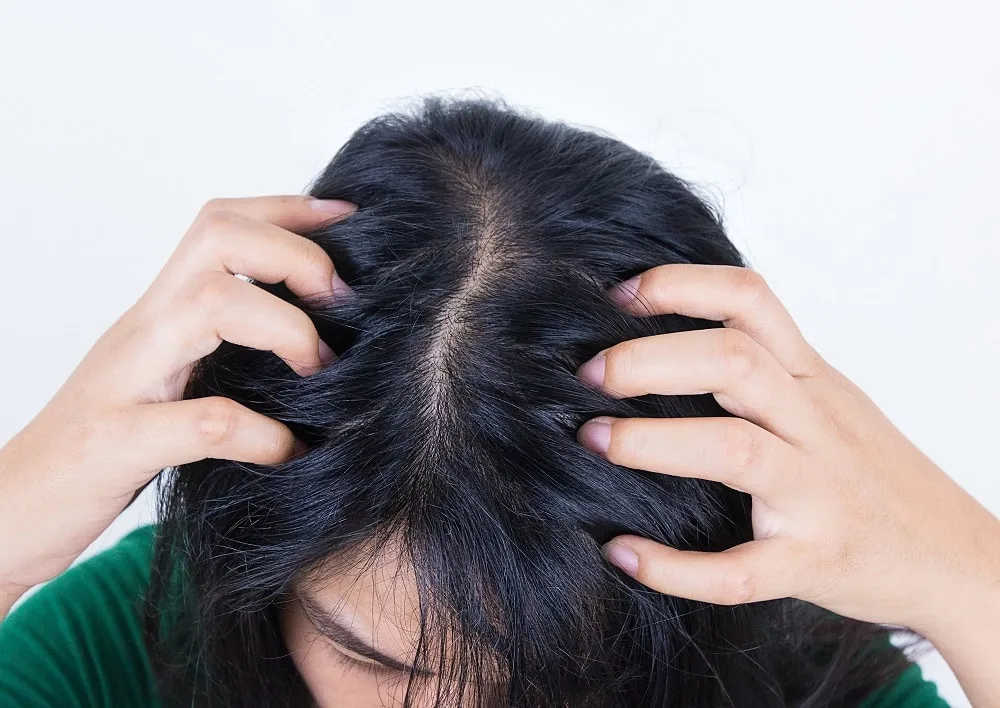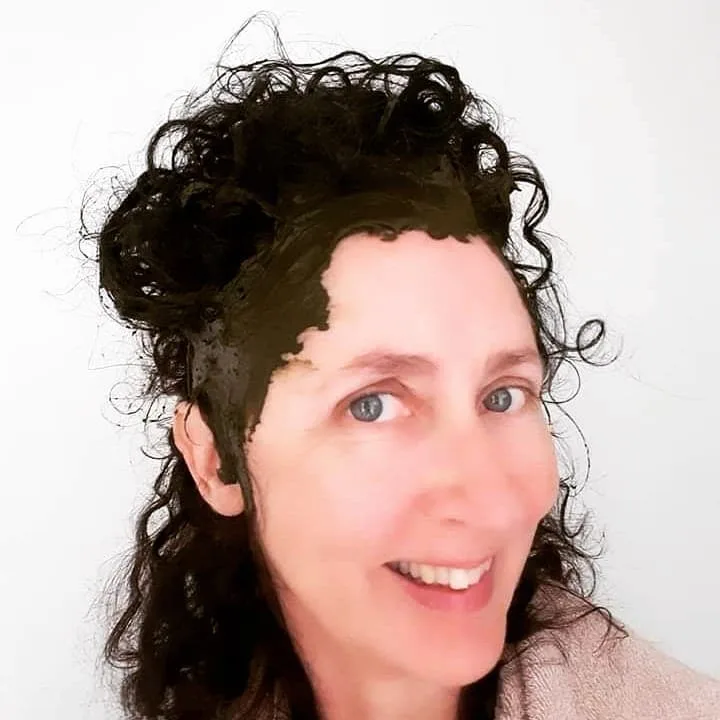When looking for natural ways to dye your hair, most people first consider using henna. While henna is a great natural hair dye, indigo hair dye is another option worth considering.
If you’re interested in dying your hair with indigo powder, you’ll want to assess the potential side effects before starting.
There aren’t many, and most people don’t experience them, but here’s everything you need to know about indigo hair dye side effects and more.
What Is Indigo Hair Dye?

Indigo hair dye is a natural hair dye, similar in many ways to henna, it is a plant-based dye (indigo plant) that can dye your hair without the harsh chemicals in the traditional dye.
It’s a gentle way to dye your hair and has fewer side effects than chemical hair dye.
Indigo Hair Dye Side Effects
There aren’t many severe side effects to using indigo hair dye, but a few are worth considering. Here are the five side effects you may or may not experience when using this product.
1. Itchy Scalp

The first and most common side effect people might experience when using indigo hair dye is that their scalp gets itchy. Even though it’s an all-natural product, everyone’s body will react differently to things.
Usually, this side effect isn’t an immediate sensation. Most people won’t experience this at all, or if they do, it’s from the indigo dye sitting on their scalp for hours at a time. The best thing you can do to see how you will react to the dye is to do a test patch.
You can put a small amount of dye on your scalp and wait several minutes to see if you’ll react and, if so, how bad it is.
2. Headaches
Headaches are another potential side effect you’ll want to be wary of before you use indigo hair dye. This side effect is much more common compared to when using henna to dye your hair.
Like the other side effects, most people don’t have to worry about this, but if you have an allergy to mold spores, then there’s a good chance you’ll have a reaction, specifically headaches when using this dye.
Knowing whether you have this type of allergy beforehand can help you avoid the sensation, but if you’re unsure, you can take a mild headache medication like ibuprofen before applying the dye to your hair.
On the positive side, even if you have a mold spore allergy, you probably won’t react to using indigo hair dye unless your allergy is severe.
3. Nausea
Going along with the headaches side effect, some people will experience nausea the longer the dye sits on their head. The indigo dye doesn’t necessarily have a pungent smell that causes nausea.
What causes the nauseous feeling some people experience is an allergy to mold spores. If you have this allergy, it can manifest in your stomach and cause you to feel queasy. You might end up having a headache and nausea at the same time.
If you are experiencing this side effect, the sooner you wash the dye out of your hair, the better you’ll start feeling. A test patch is a great way to test how your body will react to the hair dye on your head.
4. It Can Be Messy To Use

If you’re not careful, using indigo hair dye can be quite messy. The product is very pigmented, so you’ll want to make sure you’re not wearing anything you don’t want accidentally dyed or aren’t over a carpet that you’ll be upset if it gets stained.
The best thing you can do is have a designated workspace to dye your hair with the indigo hair powder and then begin working carefully so you don’t spill or splash the dye on other surfaces besides your hair.
5. It Can Dye Your Skin
Lastly, indigo hair dye can dye your skin if you’re not careful. If you accidentally get the indigo dye on your forehead, ears, or other skin, you’ll want to wipe it off as soon as possible to prevent a blue tint from being on your skin.
A great tip to avoid much of the potential skin discoloration is to use gloves, just like you would with traditional chemical hair dye.
Is There Any Benefit of Indigo Hair Dyes?
There are plenty of benefits to using indigo hair dyes. The main one is that they’re all-natural. This means you’ll likely not have any side effects, it’s healthier for your hair, and it can help reverse the graying process.
FAQs
There’s a lot to learn about indigo hair dye. If you are curious and want to learn more about this product, here are the most frequently asked questions floating around on the internet.
People harvest indigo plants and collect the leaves before separating them. They have to ferment the leaves to release the natural dye.
Once the dye is released, they allow the sun to dry up the leaves, and you get indigo powder, which can be used to dye hair.
As long as you’re using a genuinely natural hair dye, indigo hair dye shouldn’t cause hair loss. Of course, everyone’s experience is different, but it’s doubtful that you’ll lose your hair when using indigo dye.
It’s possible. Most people claim that mixing the indigo leaves with coconut oil can help reverse the gray hair process. Not only this, but it can prevent more hair from turning gray in the long run.
Absolutely. You can safely use henna and indigo dye together because they’re all-natural. You don’t have to worry about chemical reactions when mixing the two.
How long indigo hair dye will last will vary from person to person. Usually, it lasts eight to 12 weeks, but some people might find it washing out of their hair sooner.
If you wash your hair less frequently, you might even have the dye job last for more than 12 weeks, but it will still start to fade.
How long you’ll keep the indigo dye on your hair depends. People suggest leaving the product on your hair for two to three hours, but you’ll want to read the package instructions if you purchased a kit and be sure to leave it on your hair only as long as the instructions state.
Eventually, indigo dye will wash out of your hair. As with all dyes, chemical or natural, the more you wash your hair, the more the color will start to fade.
It won’t happen after only one wash, but it will happen over a few weeks. It varies depending on how often you wash your hair.
Yes. Since indigo powder dye has a natural blue tint, applying it to your hair without a primer can leave it with a beautiful blue hue.
Indigo hair dye can dye your hair a beautiful blue hue or a darker shade when paired with henna. This is a natural way to dye your hair without dealing with the side effects of chemical hair products.
Even though it’s a natural product, there are potential side effects like irritation, headaches, and more. Luckily, the side effects are few and far between, and you likely won’t have an issue using indigo hair dye.
You May Also Like
